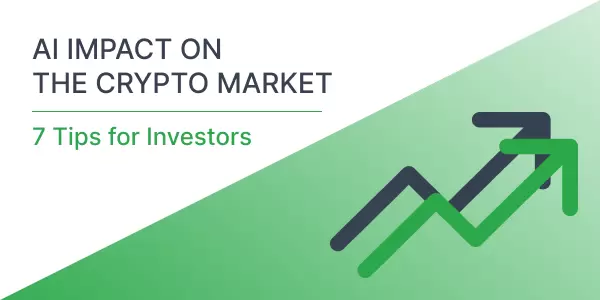7 Tips for Investors on How to Consider the Impact of AI on the Crypto Market
AI is revolutionizing the crypto market, reshaping trading strategies, investment opportunities, and risk management. Our latest blog post explores the Top 10 AI Factors Affecting Crypto and offers 7 practical tips for investors to leverage AI’s power. Discover how to stay ahead of trends, automate trading, and protect assets in an AI-driven world.
- 1. Take decisions based on AI market analysis
- 2. Invest in AI-related projects and cryptocurrencies
- 3. Use AI bots for trading automation
- 4. Be aware of the evolution of AI technologies in DeFi
- 5. Assess the risk of AI scams
- 6. Read AI outputs, but do not rely on them completely
- 7. Be cautious about government regulation of AI in cryptocurrencies
- Conclusion
We recently published an analysis and ranking of the Top 10 AI Factors Affecting the Crypto Market on the Copytrading Guide blog, where we provided a list of the most significant AI factors that, in the opinion of experts, will have the greatest impact on the cryptocurrency market over the next 2 years.

We came to the agreement that it would be useful for everyone in the market to follow some general principles so as to take advantage of the forthcoming changes to their advantage. Following are 7 easy tips for investors on how to consider the impact of AI on the crypto market and gain from it:
1. Take decisions based on AI market analysis
AI platforms such as Santiment, IntoTheBlock, and CryptoQuant monitor market data, measure social sentiment numerically, and watch "whale" activity. Subscription to these tools can help you find hidden trends, receive worthwhile signals in advance, and make more well-informed investment decisions.
2. Invest in AI-related projects and cryptocurrencies
Cryptocurrencies associated with artificial intelligence are becoming increasingly popular. Render (RNDR), Fetch.ai (FET), SingularityNET (AGIX), and Ocean Protocol (OCEAN) are some of the tokens that can prove to be long-term investments. Keep an eye on their fundamentals before buying.
3. Use AI bots for trading automation
Artificial intelligence-driven trading bots can analyze the market independently in real-time and conduct automatic exchange operations. Some examples of quality solutions are 3Commas, Pionex, Kryll. However, one should adjust their parameters regularly and check strategies thoroughly through demo accounts.
4. Be aware of the evolution of AI technologies in DeFi
AI is currently applied to decentralized lending, market making, and risk management. Research decentralized finance protocols using AI (e.g. Aave, dYdX, Numerai) to find novel passive income and staking opportunities.
5. Assess the risk of AI scams
AI can be used to phish, generate deepfake videos, and scam become more sophisticated. Be cautious of super-profit promises and believe only in well-known exchanges and wallets. Use two-factor authentication and cold wallets to store crypto assets.
6. Read AI outputs, but do not rely on them completely
AI can predict market trends, but its decisions are not yet indemnified against errors. For example, ChatGPT and similar models make their predictions depending on historical past information, but the crypto market is extremely volatile. Crosscheck information and signals by depending on data from multiple sources at all times.
7. Be cautious about government regulation of AI in cryptocurrencies
The majority of countries are already working on legislative packages that will regulate the use of AI in the finance industry. The EU, for example, has already introduced the AI Act, while the US is considering whether the government should take over AI trading. This can affect regulations on the use of AI products in the financial industry and investment in the cryptocurrency market.
Conclusion
Smart application of AI in crypto investing is not only a momentary hype, but a doorway to new market opportunities and new heights of success. The key is not to be complacent in research, experimenting with AI tools and new approaches, and of course, considering the risks, and not following blindly predictions.